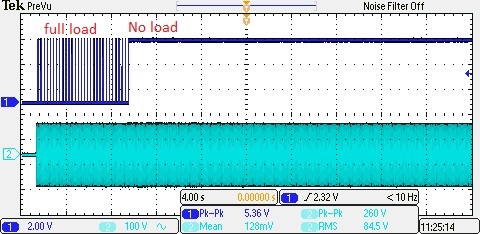Hi,
Recently I received UCC28740EVM-525 10 W Constant-Voltage demo board. It can't start up with full load in low temperature (-25 degrees).
I tried several methods: increasing Vdd capacitor, or input/output capacitor, removing NTC...etc.
It can start up with no load and half load,but it still has the cold-start problem with full load.
Is UCC28740 have some restrictions when operating in the low temperature?
Thanks for help.


